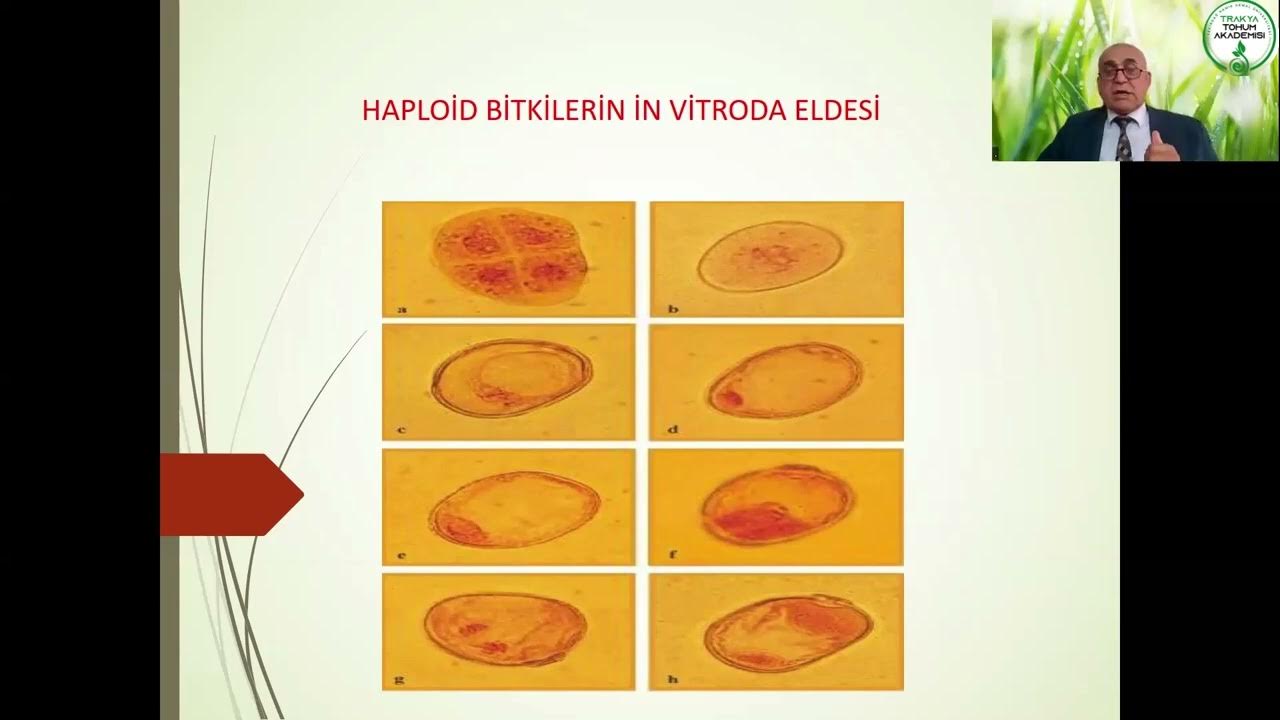Doubled Haploids: A simple method to improve efficiency of maize breeding
Summary
TLDRThe script discusses the revolutionary doubled haploid (DH) technique in maize breeding, which accelerates the development of inbred lines through a four-step process involving haploid induction, identification, chromosome doubling, and self-pollination. This method enhances uniformity and selection clarity, significantly boosting agricultural production. It relies on the availability of an effective haploid inducer, a reliable identification system, and a chromosome doubling process, ultimately enabling the rapid development of new maize varieties for diverse environments.
Takeaways
- 🌱 Homozygous inbred lines are crucial for hybrid maize breeding, which combines two unrelated inbred lines to produce high-yielding hybrids exploiting heterosis.
- 📈 Traditional inbred line formation through self-pollination results in reduced vigor due to inbreeding depression, and the duration of this process affects breeding progress.
- 🔬 The doubled haploid technique is revolutionizing maize breeding and research, offering a faster method for inbred line development.
- 🌼 The technique involves an inducer genotype that triggers the production of haploid embryos in pollinated female flowers, with protocols developed in the last decade.
- 🌾 The in vivo haploid induction technique is now a routine method for large-scale development of inbred lines in both public and private sectors.
- 📊 The doubled haploid (DH) technique's advantages include uniformity after two cycles and clearer visual differences for breeders to make selection decisions.
- 🛠️ DH production requires four steps: inducing haploids, identifying haploid kernels, doubling haploid chromosomes, and self-pollinating doubled plants.
- 🟣 CIMMYT uses a visual seed identification system with a dominant purple color marker for embryo and endosperm to distinguish haploid and diploid embryos.
- 🌿 Colchicine, a plant alkaloid, is used for artificial chromosome doubling, disrupting mitosis and resulting in doubled chromosome numbers in plants.
- 🚜 Field transplanting of treated seedlings can be done manually or with a planting machine, significantly speeding up the process for large-scale operations.
- 🌾 The final step in DH line production is self-pollination and harvest of seeds, with success rates influenced by the accuracy of haploid identification and chromosome doubling efficiency.
- 🌱 Successful implementation of the in vivo haploid induction technique depends on the availability of a high-ability haploid inducer, an effective identification system, and a reliable chromosome doubling process.
Q & A
What is the basis of hybrid maize breeding?
-The basis of hybrid maize breeding is the crossing of two unrelated inbred lines, which leads to the creation of high-yielding hybrid varieties.
What phenomenon do hybrid varieties exploit to boost agricultural production?
-Hybrid varieties exploit the phenomenon of heterosis, which has been highly successful in boosting agricultural production worldwide.
How are inbred lines traditionally formed?
-Traditionally, inbred lines are formed by continuous self-pollination for six to eight generations, with each generation experiencing a reduction in vigor due to inbreeding depression.
What is the doubled haploid technique and how does it revolutionize maize breeding?
-The doubled haploid technique is a new method that speeds up inbred line development by using an inducer genotype to trigger the production of haploid embryos in pollinated female flowers. It is revolutionizing maize breeding and research by providing a faster and more efficient way to develop inbred lines.
What are the major advantages of the doubled haploid (DH) technique in maize breeding?
-The major advantages of the DH technique are that DH lines are completely uniform after only two cropping cycles, and the visual differences between individual DH lines are much clearer than traditionally developed F3 or F4 families, making it easier for breeders to make selection decisions.
What are the four steps involved in doubled haploid production?
-The four steps in doubled haploid production are: 1) Inducing haploids, 2) Identifying kernels with a haploid embryo, 3) Doubling haploid chromosomes, and 4) Self-pollinating doubled plants.
How does CIMMYT distinguish between kernels with haploid and diploid embryos?
-CIMMYT uses a visual seed identification system based on the dominantly inherited purple coloration of the kernels, with embryo and endosperm markers, to distinguish between kernels with haploid and diploid embryos.
What is colchicine and how is it used in the artificial chromosome doubling process?
-Colchicine is a plant alkaloid that works as a mitotic inhibitor. It disrupts mitosis by binding to tubulin, inhibiting the formation of microtubules and the polar migration of chromosomes, resulting in a doubled chromosome number in the plant.
What are the challenges faced in the self-pollination and harvest of seeds from D0 plants?
-Many D0 plants produce a limited number of seeds, sometimes as low as one, due to the low harvest. Seeds are collected with care and kept inside their original pollination bags to minimize loss during handling.
What factors influence the success rate of creating D1 seed from haploid kernels?
-Factors influencing the success rate include the accuracy of the haploid identification system, the efficiency of the chromosome doubling system, and favorable agronomic conditions such as good soil, reliable irrigation, and fertilization.
How does the in vivo haploid induction technique benefit maize breeding programs?
-The in vivo haploid induction technique benefits maize breeding programs by reducing costs and speeding up the development of better adapted maize varieties for resource-poor farmers in challenging environments.
Outlines

Cette section est réservée aux utilisateurs payants. Améliorez votre compte pour accéder à cette section.
Améliorer maintenantMindmap

Cette section est réservée aux utilisateurs payants. Améliorez votre compte pour accéder à cette section.
Améliorer maintenantKeywords

Cette section est réservée aux utilisateurs payants. Améliorez votre compte pour accéder à cette section.
Améliorer maintenantHighlights

Cette section est réservée aux utilisateurs payants. Améliorez votre compte pour accéder à cette section.
Améliorer maintenantTranscripts

Cette section est réservée aux utilisateurs payants. Améliorez votre compte pour accéder à cette section.
Améliorer maintenant5.0 / 5 (0 votes)






